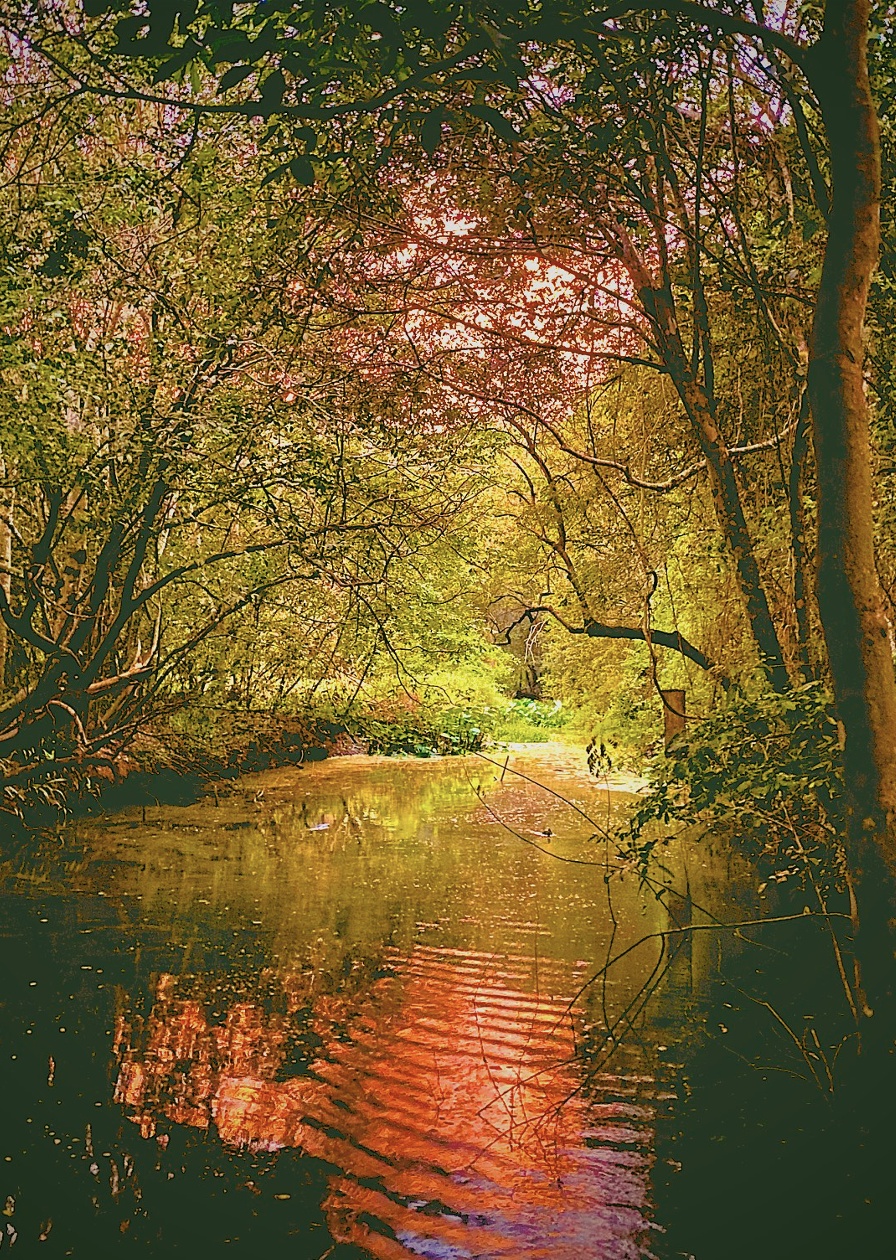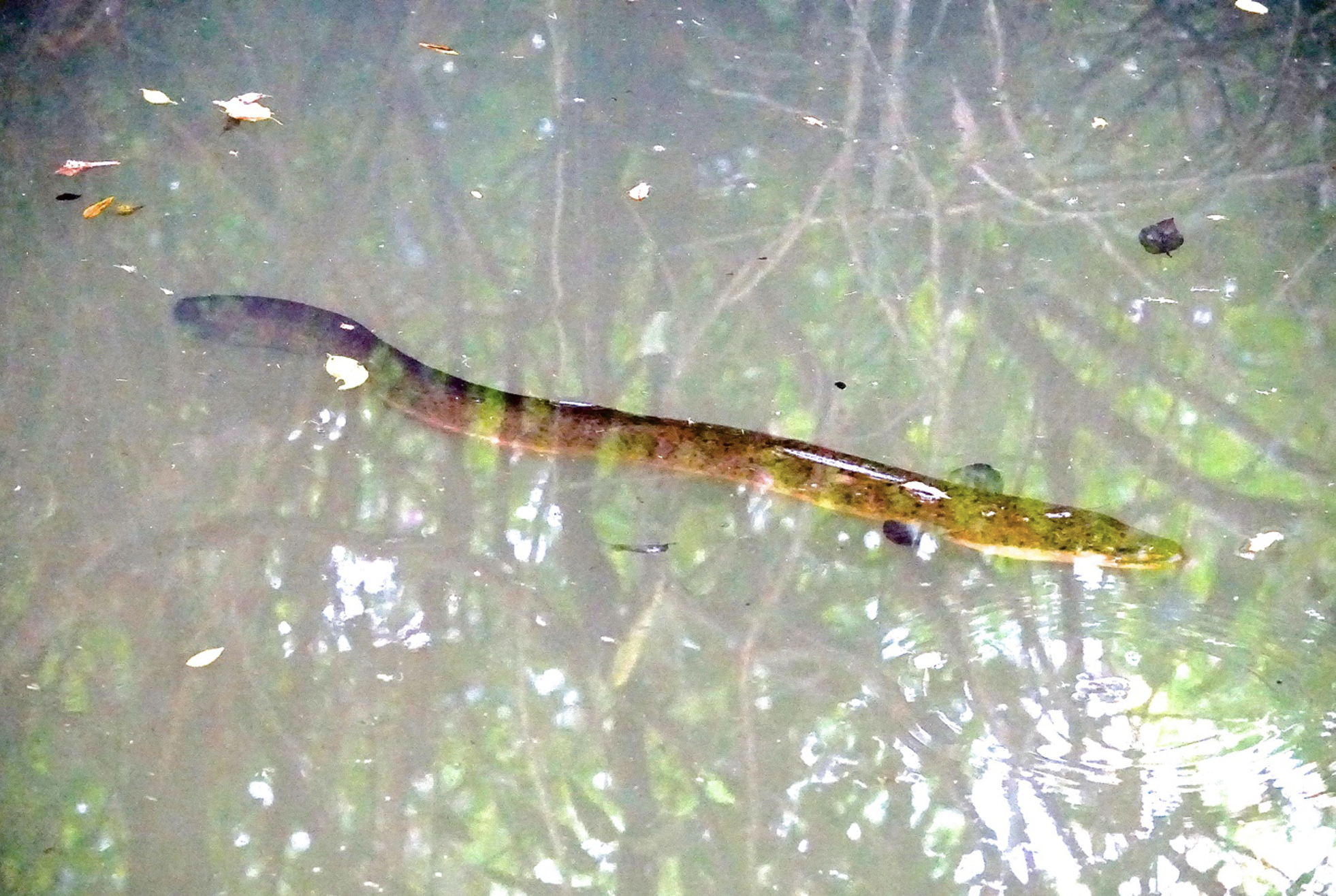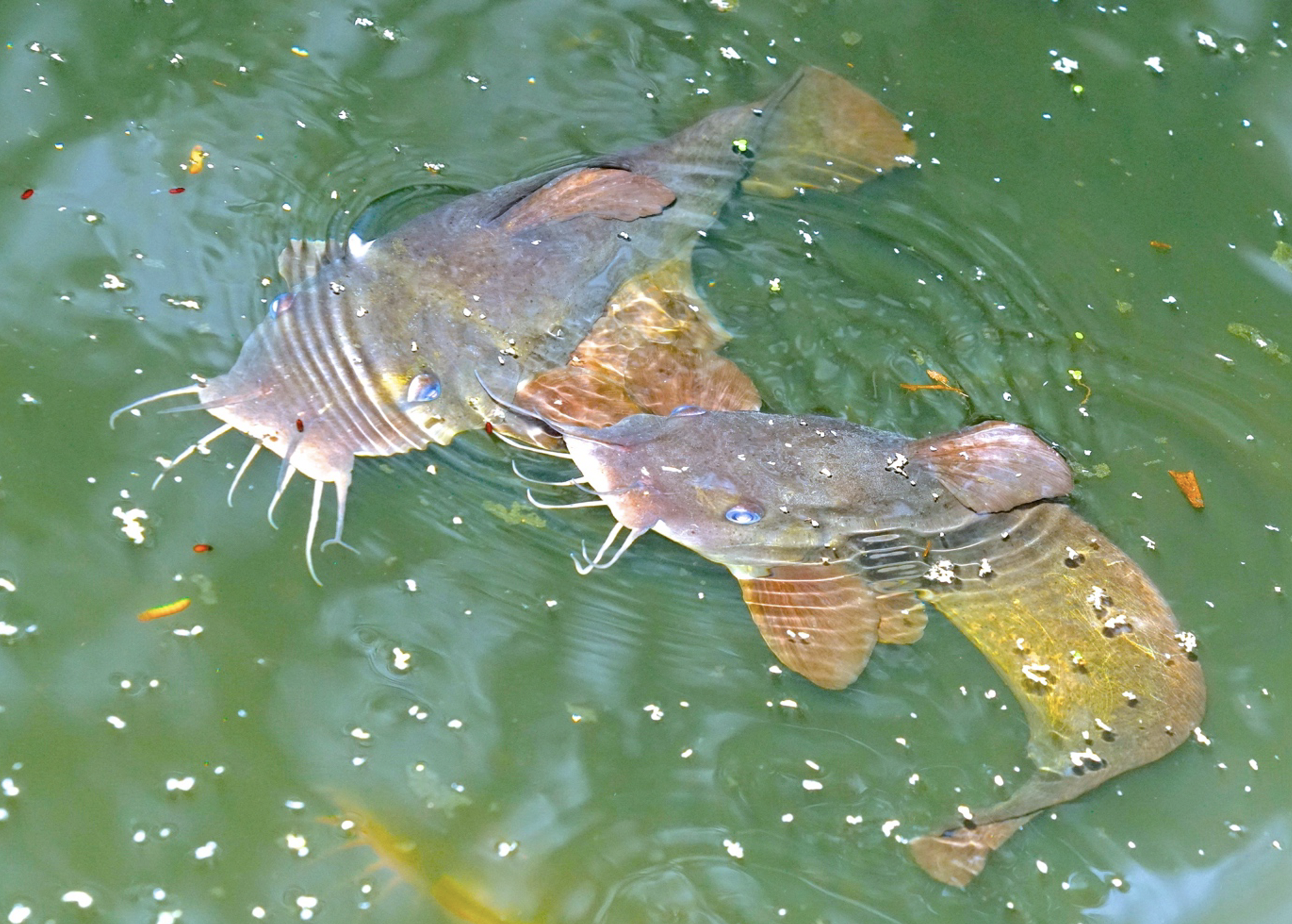The main feature of the Moggill Creek Catchment is the creek system that formed the area. It is dominated by Moggill Creek, which combines the flows from Gold Creek and its Reservoir and a few smaller mainly ephemeral tributaries.
Where Moggill Creek joins the Brisbane River, as it flows through Casuarina Park, it is tidal and the water has varying levels of brackishness depending on the creek flows and the salinity of the water being pushed back from the river with the twice daily tides. Here there is practically no aquatic vegetation and the banks of the creek are heavily eroded and the water is constantly turbid. The local Catchment Group is assisting in stabilising the banks with appropriate trees and plantings of Lomandra.
There are many fish that can be easily seen in this part of the creek dominated by Mullet and Fork-tailed Catfish. The Mullet feed on the surface scum which contains pollen and a few micro-organisms on which they feed. The catfish are scavengers and eat both plant and animal scraps washed down the creek. Because of the lack of suitable habitat there are few small species, but shoals of the young of several salt-water and brackish species are often present.
As you go further up the creek as it winds through the urban area and around the Kenmore High School the tidal affect is lost and the habitat improves with several native and exotic aquatic plants present. The bottom of the creek is stony, and snags and a lot of decayed vegetative matter (mulm) is present which provides an excellent habitat containing food and a suitable spawning medium for a few species. Here Platypus can be seen and the range of fish species is much larger.
Sunrise on Gold Creek at Adavale St. Brookfield Photo: Ed Frazer
The main feature of the Moggill Creek Catchment is the creek system that formed the area. It is dominated by Moggill Creek, which combines the flows from Gold Creek and its Reservoir and a few smaller mainly ephemeral tributaries.
Where Moggill Creek joins the Brisbane River, as it flows through Casuarina Park, it is tidal and the water has varying levels of brackishness depending on the creek flows and the salinity of the water being pushed back from the river with the twice daily tides. Here there is practically no aquatic vegetation and the banks of the creek are heavily eroded and the water is constantly turbid. The local Catchment Group is assisting in stabilising the banks with appropriate trees and plantings of Lomandra.
There are many fish that can be easily seen in this part of the creek dominated by Mullet and Fork-tailed Catfish. The Mullet feed on the surface scum which contains pollen and a few micro-organisms on which they feed. The catfish are scavengers and eat both plant and animal scraps washed down the creek. Because of the lack of suitable habitat there are few small species, but shoals of the young of several salt-water and brackish species are often present.
As you go further up the creek as it winds through the urban area and around the Kenmore High School the tidal affect is lost and the habitat improves with several native and exotic aquatic plants present. The bottom of the creek is stony, and snags and a lot of decayed vegetative matter (mulm) is present which provides an excellent habitat containing food and a suitable spawning medium for a few species. Here Platypus can be seen and the range of fish species is much larger.
Long-finned Eel (approx. 1.2m) Photo: Ed Frazer
The largest species is the Fresh-water Eel, which grows to 1.5 metres. These eels are somewhat territorial and will go overland in damp weather to find a new territory in farm dams where they live quite well. We have had them arrive in our nursery ponds and in past years our production manager caught them and produced jellied eel, which was a delicacy in his youth in England.
We used to see schools of around 12 Mullet in the big ponds alongside our property on Adavale St. 30 years ago but haven’t seen them recently. They were quite big fish and I am not sure if they were Fresh-water Mullet or Sea-mullet which venture into freshwater.
Another common fish in this reach of Moggill creek is the Eel-tailed Catfish, which grows to 80cm and weigh 8kg although I have never seen one that size in Gold Creek. While not a schooling fish, a large number can be attracted with bread or a suitable fish food and they will come to the surface in a feeding frenzy. They mainly feed at dusk and through the night aided by their sensitive long whiskers. They have a spectacular breeding method involving building a circular nest up to 2 metres in diameter where they expose and clean the stones on the bottom of the creek. Here they lay about 1000eggs which the male fans for 7 days until they hatch. Eel-tailed catfish are white fleshed and reported to be excellent eating, but my only experience of eating them was when my then 8-year-old son came home with a Huckleberry Finn style string of catfish he had caught and insisted I cook them. They were inedible as the flesh had a strong muddy overtone.
Eel-tailed Catfish (Approx. 45 cm) Photo: Ed Frazer
One day he also came home with a huge Silver Perch. I forget the actual weight, but it was certainly snapper sized. We later found out from Brian Leahy that several Silver Perch fingerlings were released in the Gold Creek Dam and this one was obviously washed over the spillway. We kept it alive in one of our troughs and later released it. Silver Perch, while a native fish, breed only after a substantial flood and need conditions that would not be replicated in our catchment. I recently saw another smaller Silver Perch when feeding the catfish. It was probably washed out from a farm dam as the species is a popular one for stocking farm dams.
As you go further up Moggill Creek to the junction with Gold Creek, the aquatic vegetation increases and provides a habitat suitable for many smaller fish species. While much of this vegetation is exotic it never-the-less supports a substantial population. Unfortunately, most native aquatic plants cannot tolerate elevated phosphorus levels, which are a feature of settled areas and while our creeks are some of the most pristine in Brisbane, the creek picks up enough phosphorus from septic systems and horse manure to reduce its suitability for the few native aquatic plant species, such as Myriophyllum species and Limnophilla indica, that provide excellent habitat for the breeding of many native fish species.
Some of the best suited species in this part of the creek come from the Gudgeon family. These are mainly about 4-5cm fish that breed by laying eggs on stones or submerged wood. They are attended constantly for the short time they take to hatch. In good conditions they can breed several times a year. They stay around the edges of the creeks often hiding in the vegetation darting out to catch any small prey as it passes by.
Another group in this reach of the creeks are the Ornate Rainbowfish (5cm) and their allied Australian Blue-eyes. The Rainbowfish is a prized aquarium fish that has all the colours of the rainbow in tiny reflective scales. It is a mainly mid-water to surface dwelling fish that feeds on micro-organisms and algae which are scraped off the plants and stones. They are unusual in their breeding as they lay just a few eggs a time over several days so there are always fry of different ages present. They deposit sticky eggs among fine leaves of aquatic plants or on the fine roots of trees such as weeping willows, which grow prolifically on the edges of creeks. The Blue-eyes (3cm) are noted for their brilliant eyes and yellow flag-like dorsal fins. They used to be common in the creek and 40 years ago my son and I used to take our punt on the creek at night and could net them out with a small hand net as they “slept” near the surface.
A common smaller fish along this part of the creeks that has prospered from the increased fertility is the Australian Smelt (7.5cm). It is an elongated schooling fish that is fast growing and it matures in 12 months. It scatters eggs on the stony floor of the creek and they take 10 days to hatch.
While Moggill Creek peters out to a small headwater in Upper Brookfield Valley, Gold Creek starts from the Gold Creek Reservoir. Here the water conditions are different; static water, which is pretty much pristine without the elevated phosphorus levels of the creeks below. These conditions are excellent for Gudgeons and several other small natives, but the overall fertility is much lower than the lower reaches of the creek. The dam does provide a reservoir of fish that is important for repopulating the creeks after prolonged drought where the creeks have practically dried out. Under flood condition some fish, fry or eggs are washed out of the dam and because all the creeks are interconnected in flood times, the fish can work around the edges of the flood water and repopulate depleted areas.
It is during times of flooding that the fish also swim up the edges of the water to populate farm dams. For those who haven’t been fortunate to have their dams populated naturally by this method, direct stocking with Firetail and Empire Gudgeons and Rainbows will keep the dams free of mosquitos and midges. It is best to avoid stocking with Spangled Perch (20cm) as they are very aggressive and eat all the smaller species. They also breed exceptionally rapidly, which leads to overstocking with a lot of stunted fish.
The best way to help maintain our beautiful watercourses is to ensure the margins of the creeks are well planted with trees that will shade the water. This will reduce the weed growth and ensure that mats of algae do not form because of the phosphorus levels plus the extra light. If horses and other livestock are kept, leave a substantial margin to the creek planted with shrubs and herbage that will take up the fertility from the horse manure before it gets washed into the creek.
We have a wonderful asset with our waterways which support an amazing amount of interesting wildlife from insects, frogs, birds and mammals. The efforts of the property owners and the work of the MCCG restoration groups are vital in keeping it this way.
With thanks to Ed Frazer for another excellent Bush Bites.




